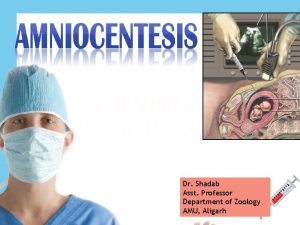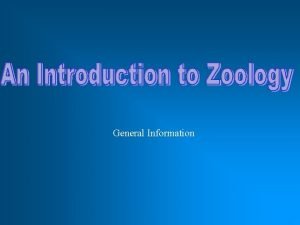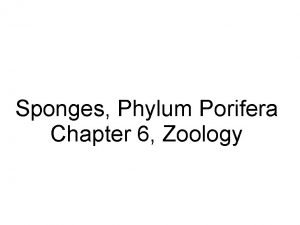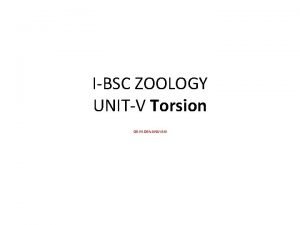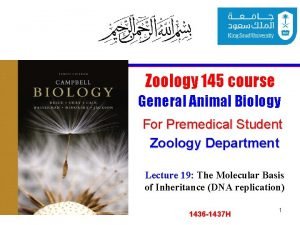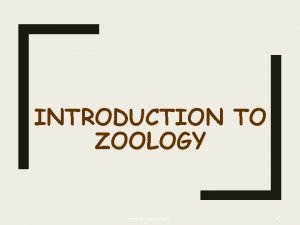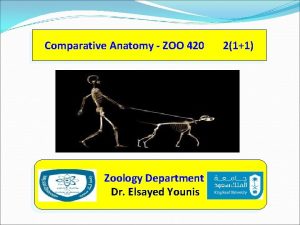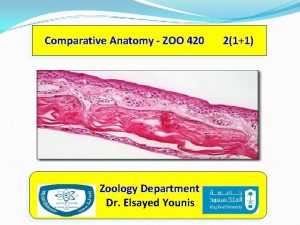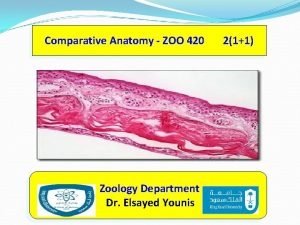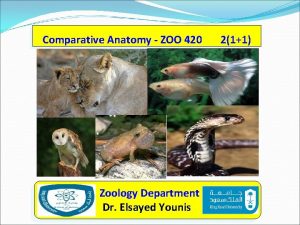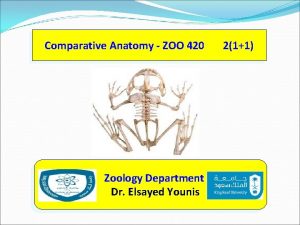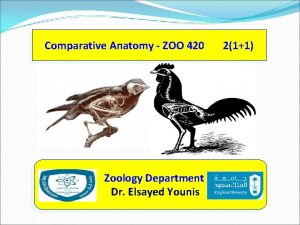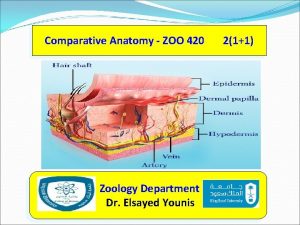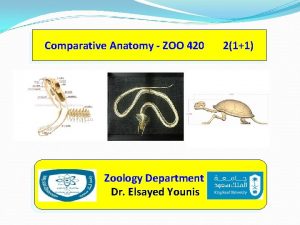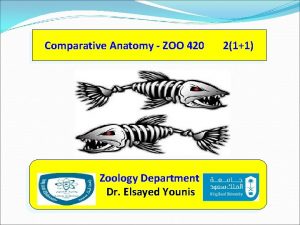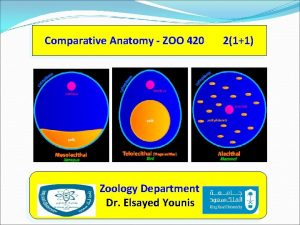Comparative Anatomy ZOO 420 Zoology Department Dr Elsayed











- Slides: 11

Comparative Anatomy - ZOO 420 Zoology Department Dr. Elsayed Younis 2(1+1)

General Information Dr. Elsayed Younis Office : 2 B 133 Tel. : 4673672 Lab: 2 B 117 Tel. : 4675764 Mobile : 0508505613 E-mail: emyounis@ksu. edu. sa http: //fac. ksu. edu. sa/emyounis/home

Course description (contents) : Anatomical Terminology, historical background and the importance of this subject and the way it is studied. Comparative studies on the integumentary system (skin) and skeletal systems of different classes of vertebrates. References George C Kent and Robert K Carr(2008). Comparative Anatomy of the Vertebrates. 9 th ed. , Mc. Graw Hill.

Comparative Anatomy : The comparative study of the body structures of different species of animals in order to understand the adaptive changes they have undergone in the course of evolution from common ancestors. OR Comparative Anatomy : is the study of similarities and differences in the anatomy (body structures) of different species. The field is largely confined to the study of the vertebrate animals. ( Comparative Vertebrate Anatomy)

Macroanatomy (Gross anatomy) : deals with those structures that can be seen without a microscope. Microanatomy : the branch of anatomy dealing with microscopic structures (distinguished from gross anatomy). Homology : likeness in structure between parts of different organisms due to evolutionary differentiation from a corresponding part in a common ancestor.

Analogy : A Functional similarity without being associated with anatomical construction. Functional Anatomy : the study of anatomy in its relation to function. ( physiological anatomy, morphophysiology )

Homologous Structures Have similar structures, but different uses

Analogous Structures Body parts similar in use, but different in structure E. g. Bird wing and insect wing

Phylum Chordata ( chordates ) ( Notochord , Spinal cord, Pharynx with gill slits ) Classification of Chordata : includes four subphyla Subphylum : Cephalochordata Subphylum : Hemichordata Subphylum : Urochordata Subphylum : Vertebrata(Craniata) - Fishes - Amphibians - Reptilians - Aves ( Birds) - Mammals

Diversity of Chordates

Historical review ( background ) - Ancient Egyptians (pharaohs) : (Imhotep) - Babylonians and Sumerians - The Greeks (Greek civilization) : ( Hippocrates , Aristotle ) - Romans (Roman civilization) : Galen - Islamic civilization : (Al-Jahiz 776 AD , Ibn Sina 980 AD, Ibn Rushd 1126 AD, Ibn Al-Nafis 1213 AD, Al. Damiri 1344) - Pierre Belon (1517– 1564): Modern comparative anatomy.
